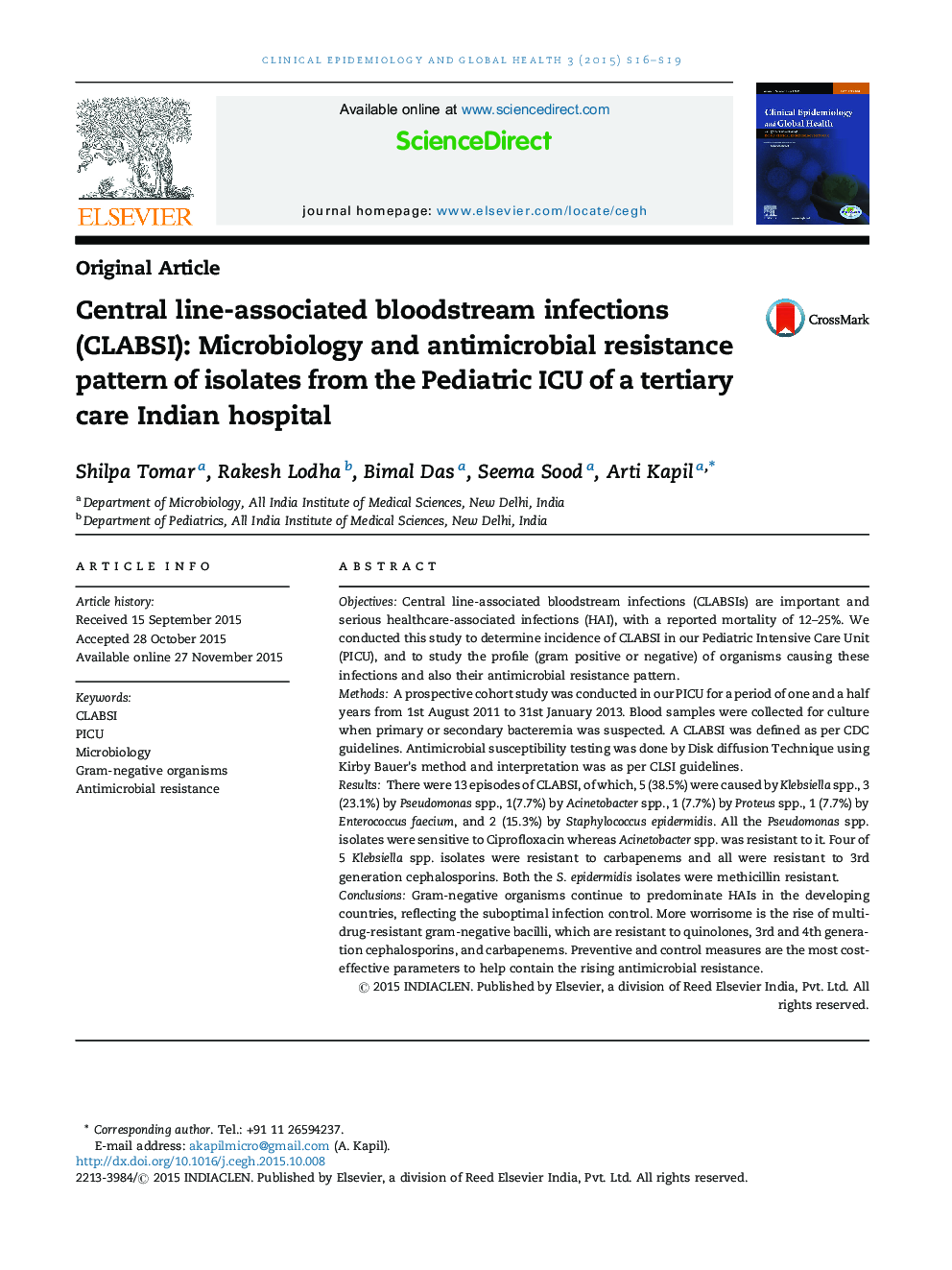| کد مقاله | کد نشریه | سال انتشار | مقاله انگلیسی | نسخه تمام متن |
|---|---|---|---|---|
| 3396309 | 1221919 | 2015 | 4 صفحه PDF | دانلود رایگان |

ObjectivesCentral line-associated bloodstream infections (CLABSIs) are important and serious healthcare-associated infections (HAI), with a reported mortality of 12–25%. We conducted this study to determine incidence of CLABSI in our Pediatric Intensive Care Unit (PICU), and to study the profile (gram positive or negative) of organisms causing these infections and also their antimicrobial resistance pattern.MethodsA prospective cohort study was conducted in our PICU for a period of one and a half years from 1st August 2011 to 31st January 2013. Blood samples were collected for culture when primary or secondary bacteremia was suspected. A CLABSI was defined as per CDC guidelines. Antimicrobial susceptibility testing was done by Disk diffusion Technique using Kirby Bauer's method and interpretation was as per CLSI guidelines.ResultsThere were 13 episodes of CLABSI, of which, 5 (38.5%) were caused by Klebsiella spp., 3 (23.1%) by Pseudomonas spp., 1(7.7%) by Acinetobacter spp., 1 (7.7%) by Proteus spp., 1 (7.7%) by Enterococcus faecium, and 2 (15.3%) by Staphylococcus epidermidis. All the Pseudomonas spp. isolates were sensitive to Ciprofloxacin whereas Acinetobacter spp. was resistant to it. Four of 5 Klebsiella spp. isolates were resistant to carbapenems and all were resistant to 3rd generation cephalosporins. Both the S. epidermidis isolates were methicillin resistant.ConclusionsGram-negative organisms continue to predominate HAIs in the developing countries, reflecting the suboptimal infection control. More worrisome is the rise of multidrug-resistant gram-negative bacilli, which are resistant to quinolones, 3rd and 4th generation cephalosporins, and carbapenems. Preventive and control measures are the most cost-effective parameters to help contain the rising antimicrobial resistance.
Journal: Clinical Epidemiology and Global Health - Volume 3, Supplement 1, 2015, Pages S16–S19